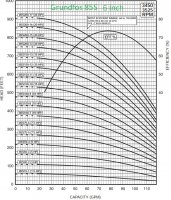Hurricane Hill
New Member
I draw water from a tank that is fed by a few springs, and need to boost pressure to my home. I've seen plenty of submersible pump recommendations here, but the most I've found on other setups is to use a "jet pump".
What would a good pump be to use in conjunction with a CSV for my situation? Grundfos seems to be one of the preferred brands for submersible, so I've found the Grundfos JP series (jet pump) that seems to be used for shallow well and cistern/tank setups.
Any recommendations very much appreciated.
Note: I know very little about this topic. I'm doing my best to learn, though I am not a professional in this field, nor do I intend to become one. I have already tried engaging a professional, but haven't found anyone who already has any experience with anything except VSD/VFD booster systems.
What would a good pump be to use in conjunction with a CSV for my situation? Grundfos seems to be one of the preferred brands for submersible, so I've found the Grundfos JP series (jet pump) that seems to be used for shallow well and cistern/tank setups.
Any recommendations very much appreciated.
Note: I know very little about this topic. I'm doing my best to learn, though I am not a professional in this field, nor do I intend to become one. I have already tried engaging a professional, but haven't found anyone who already has any experience with anything except VSD/VFD booster systems.


